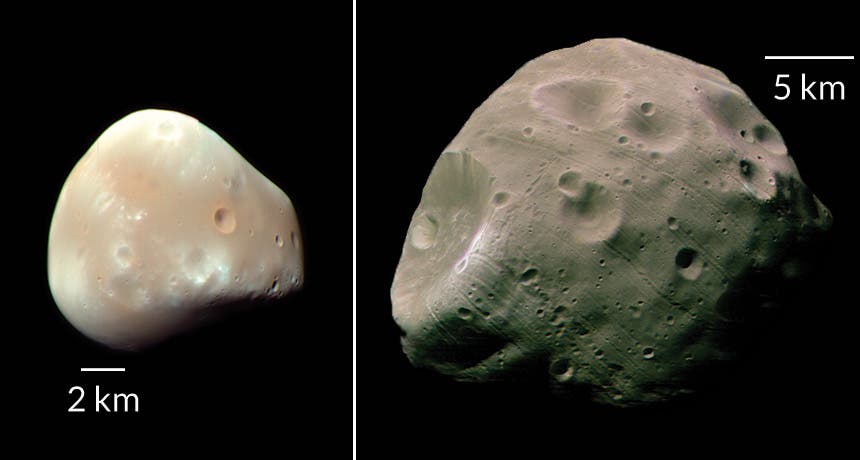
There are many instances where a comparison between Earth and Mars renders many similarities. As far as moons go, Earth takes the cake, though. We have a beautiful natural satellite orbiting the planet that’s about 25% smaller in diameter than Earth. Mars, on the other hand, has two moons which typically should score you more points. These look more like pebbles than moons when you factor in their size in relation to our own moon — Deimos is only 12 kilometers across, while the larger cousin Phobos has 22 kilometers in diameter.
While the size of Mars’ moons is laughable, some scientists believe the Red Planet used to have many more moons. This is the conclusion of an investigation made by the Royal Observatory of Belgium in Brussels, whose researchers tried to track the origin of Deimos and Phobos.
There are generally two schools of thought. One says the two moons are asteroids captured by the planet’s gravity, the second believes these are ‘homegrown’. Neither of the two hypotheses has so far fared well to scientific scrutiny. Calculations could not trace the satellites’ orbits if these indeed were snatched, nor could they reproduce the conditions for a natural formation.
Instead, Pascal Rosenblatt, a planetary scientist, and his colleagues at the Royal Observatory found a ring of material spewed in outer space by Mars’ impact with an asteroid could better explain things. A model of such a collision suggests the impact could have formed large satellites relatively close to the planet. These large moons could have then herded remaining debris in the sparsely populated outer part of the ring to form Phobos and Deimos. The reason we can’t see these large moons today is because they’ve been reclaimed by Mars’ gravity and struck the planet. Something similar is also set to happen to Mars’ largest moon, Phobos, in the future.
“The resulting orbital resonances spread outwards and gather dispersed outer disc debris, facilitating accretion into two satellites of sizes similar to Phobos and Deimos. The larger inner moons fall back to Mars after about 5 million years due to the tidal pull of the planet, after which the two outer satellites evolve into Phobos- and Deimos-like orbits. The proposed scenario can explain why Mars has two small satellites instead of one large moon. Our model predicts that Phobos and Deimos are composed of a mixture of material from Mars and the impactor,” the researchers wrote.






